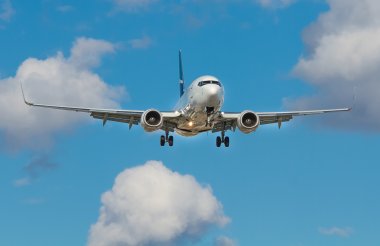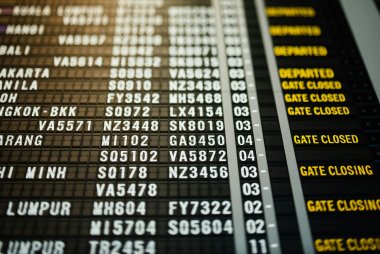As of April 2024,10 airlines globally operate the Airbus A380 are All Nippon Airways, Asiana Airlines, British Airways, Emirates, Etihad Airways, Korean Air, Lufthansa, Qantas, Qatar Airways, and Singapore Airlines.
Emirates being the largest operator, holding over half of the total A380s in service. This iconic aircraft continues to serve major international routes despite its production ceasing in 2021.
Current Operators of the Airbus A380
As of early 2024, the Airbus A380 remains in operation with several prestigious airlines globally. The largest operator of this colossal aircraft is Emirates, which boasts a fleet of 123 A380s, representing over half of all A380s currently in service. This airline leverages the A380’s vast capacity to dominate long-haul routes, particularly the popular Dubai to London Heathrow path.
| Airline | Country | Entry Year | Last Delivery | Current | Retired | Fleet | Notes |
|---|---|---|---|---|---|---|---|
| All Nippon Airways | Japan | 2019 | 2020 | 3 | — | ▏ | |
| Asiana Airlines | South Korea | 2014 | 2016 | 6 | — | ▎ | To be retired by 2026. |
| British Airways | United Kingdom | 2013 | 2016 | 12 | — | ▌ | |
| Emirates | United Arab Emirates | 2008 | 2021 | 116 | 7 | █████ | World’s largest operator of the A380. |
| Etihad Airways | United Arab Emirates | 2014 | 2017 | 6 | 4 | ▎ | |
| Korean Air | South Korea | 2011 | 2014 | 9 | 1 | ▍ | To be retired by 2026. |
| Lufthansa | Germany | 2010 | 2015 | 8 | 6 | ▍ | To be retired after 2030. |
| Qantas | Australia | 2008 | 2011 | 10 | 2 | ▌ | To be replaced with the Airbus A350-1000 from 2032. |
| Qatar Airways | Qatar | 2014 | 2018 | 8 | 2 | ▍ | To be replaced with the Airbus A350-1000 from 2028. |
| Singapore Airlines | Singapore | 2007 | 2018 | 12 | 12 | ▌ | Launch customer. |
Last complete update: April 2024
Fleet Visualization: ▏= ~5 aircraft, ▎= ~10, ▌= ~20, █ = ~25
These airlines continue to utilize the Airbus A380 despite the end of its production, valuing its passenger appeal and operational capabilities on high-volume routes.

Overview of Emirates’ Extensive A380 Fleet
Emirates stands out as the largest global operator of the Airbus A380. With a formidable fleet of 123 aircraft, Emirates harnesses the A380’s capabilities to enhance its status as a leader in international aviation. The airline’s commitment to the A380 is evident in its extensive use on high-traffic routes, such as from Dubai to various major cities around the world including London, New York, and Sydney.
The A380 fleet has enabled Emirates to offer distinctive services, such as luxury first-class suites and onboard showers, setting high standards in passenger comfort and experiences. The aircraft’s large capacity also allows Emirates to efficiently manage significant passenger volumes on popular routes, making it a cornerstone of their fleet strategy.
Key features of Emirates’ A380 fleet include:
- Luxury Amenities: Including private suites and shower spas in first class.
- Advanced In-flight Entertainment: Offering over 2,500 channels.
- Environmental Considerations: Modifications for reduced noise and emissions.
Emirates’ strategic deployment of the A380 underscores its role in shaping the future of air travel, emphasizing comfort, luxury, and operational efficiency.

Introduction to ANA’s Airbus A380 Services
All Nippon Airways (ANA), Japan’s largest airline, introduced the Airbus A380 into their fleet with a distinctive approach. As of 2024, ANA operates three A380 aircraft, all specially designed with a unique sea turtle livery, symbolizing good luck and longevity. These aircraft primarily serve the popular route between Tokyo and Honolulu, catering to the high demand for vacation travel between Japan and Hawaii.
The A380s in ANA’s fleet are configured to enhance passenger comfort and experience, featuring multiple classes of service that include first class, business class, premium economy, and economy. Each class is tailored to provide a unique travel experience, emphasizing comfort and Japanese hospitality.
Key highlights of ANA’s A380 service include:
- Themed Cabins: Each cabin is decorated with unique Hawaiian motifs to enhance the travel experience.
- Spacious Seating: Generous legroom and wider seats across all classes.
- Cultural Integration: In-flight amenities and services that reflect Japanese culture and hospitality.
This strategic deployment of the A380 allows ANA to capitalize on the high volume of tourists between these destinations, providing a memorable and comfortable journey with a touch of Japanese elegance.
Asiana Airlines’ Future Plans for the A380
Asiana Airlines, a major operator of the Airbus A380 since 2014, is planning significant changes for its fleet. As part of a strategic shift, Asiana aims to retire all its A380 aircraft by 2026. This decision aligns with the airline’s broader objective to enhance operational efficiency and adapt to the evolving aviation market dynamics.
Asiana’s future fleet strategy includes transitioning to more fuel-efficient and versatile aircraft types. This move is intended to better serve its network and meet environmental sustainability goals. The transition will involve:
- Phasing Out Older Models: Gradually retiring the A380s and replacing them with advanced, more fuel-efficient models.
- Investing in New Technology: Embracing newer technologies that offer better performance and reduced environmental impact.
- Realigning Route Strategy: Adjusting flight routes to optimize the use of the new aircraft and enhance passenger convenience.
This strategic overhaul is expected to position Asiana Airlines as a more competitive and sustainable player in the international aviation industry.

British Airways’ Continued Use of the A380
British Airways remains committed to its fleet of Airbus A380s, utilizing these large aircraft to manage high-capacity routes effectively. As of 2024, the airline operates 12 A380s, primarily on transatlantic flights and other high-demand international routes. This strategic use underscores the A380’s role in British Airways’ operations, providing significant passenger capacity and comfort.
The decision to continue operating the A380 fleet is driven by:
- Passenger Demand: High demand on key routes justifies the use of large, comfortable aircraft.
- Operational Efficiency: The A380’s ability to carry more passengers per flight reduces the number of flights needed, thereby optimizing slot usage at congested airports.
- Customer Satisfaction: The A380 offers a superior travel experience with more space and onboard amenities, enhancing overall passenger satisfaction.
British Airways’ commitment to the A380 also includes updates and refurbishments to ensure the aircraft remain a premium choice for international travelers, aligning with the airline’s reputation for quality and customer service.
Etihad Airways and the A380 Experience
Etihad Airways enhances its luxury travel offerings with the Airbus A380, providing an exceptional experience for its passengers. Operating a modest fleet of these large aircraft, Etihad utilizes the A380 primarily on its most lucrative and high-demand routes, such as flights from Abu Dhabi to major destinations like London, Paris, and New York.
The A380 allows Etihad to offer distinctive features that set it apart in the competitive luxury travel market:
- The Residence: An exclusive three-room suite in the sky, offering unparalleled privacy and comfort with a living room, separate bedroom, and private bathroom.
- First Apartment: Spacious first-class cabins with a wide armchair and a separate bed, along with personal vanity units and a shower facility.
- Enhanced In-flight Entertainment: State-of-the-art systems providing a wide range of options to keep passengers engaged throughout their journey.
These premium amenities not only elevate the passenger experience but also reflect Etihad’s commitment to luxury, innovation, and passenger comfort, making the A380 a cornerstone of their fleet for high-profile routes.
Korean Air’s Strategy with the Airbus A380
Korean Air has strategically utilized the Airbus A380 to enhance its long-haul flight services, focusing on providing a superior passenger experience. Operating nine A380 aircraft, Korean Air deploys these on key international routes, including flights to North America and Europe, where high passenger volume and demand for comfort are significant.
The airline’s A380s are equipped with features designed to optimize passenger comfort and satisfaction:
- Prestige Suites: Offering private, fully flat beds in business class, ensuring privacy and comfort.
- Celestial Bar: A unique lounge area where passengers can socialize and relax during their flight.
- Duty-Free Showcase: A shopping area where passengers can browse an array of luxury products.
Despite plans to retire the A380 fleet by 2026 due to evolving market conditions and fleet modernization efforts, Korean Air continues to leverage the aircraft’s capabilities to deliver exceptional service and maintain competitive advantage on high-volume routes. The focus remains on maximizing the operational efficiency and passenger appeal of the A380 until its phased retirement.

Lufthansa’s Long-Term Plans for the A380
Lufthansa, one of the major operators of the Airbus A380, has outlined a strategic plan for the aircraft that balances current operational needs with future fleet modernization. As of 2024, Lufthansa operates four A380s, primarily on routes that demand high capacity and offer significant long-haul connectivity.
The airline has decided to continue utilizing the A380 until after 2030, recognizing the aircraft’s benefits in terms of passenger capacity and flight efficiency on key routes. This decision reflects Lufthansa’s commitment to maximizing the use of its existing fleet while gradually transitioning to more fuel-efficient aircraft in the future.
Key aspects of Lufthansa’s strategy include:
- Maintaining Operational Flexibility: The A380 allows Lufthansa to adjust capacity according to seasonal demand fluctuations.
- Enhancing Passenger Experience: The A380’s spacious cabins and advanced amenities continue to attract premium travelers.
- Planning for Fleet Renewal: Preparing for a gradual phase-out of the A380 as newer, more efficient models become available.
Lufthansa’s approach ensures that the A380 remains a valuable asset in its fleet, providing both operational flexibility and a high-quality travel experience for its passengers.

Qantas and the Transition from A380 to A350
Qantas is strategically transitioning its fleet by gradually replacing its Airbus A380s with the more technologically advanced A350-1000 aircraft. This shift is set to begin in 2032, aligning with Qantas’s goals for enhanced fuel efficiency and reduced environmental impact. The A350-1000 offers significant advancements in aerodynamics, materials, and engines, making it a superior choice for future long-haul operations.
While the A380 has served Qantas well, particularly on high-volume routes, the introduction of the A350-1000 is expected to provide several benefits:
- Improved Fuel Efficiency: The A350-1000 is designed to be more fuel-efficient, which is crucial in reducing operating costs and environmental footprint.
- Advanced Passenger Comfort: The aircraft features the latest in cabin design, offering a more comfortable and enjoyable travel experience.
- Operational Flexibility: The A350-1000 can operate on longer and more challenging routes, providing Qantas with greater route flexibility.
Qantas’s commitment to upgrading its fleet with the A350-1000 demonstrates its dedication to sustainability and customer satisfaction, ensuring that the airline remains competitive in the evolving aviation industry.
The Operational History of Qatar Airways’ A380s
Qatar Airways has played a significant role in the operational history of the Airbus A380 since its induction into their fleet in 2014. Renowned for luxury and service excellence, Qatar Airways utilized the A380 primarily on high-demand routes such as Doha to London and Paris, capitalizing on the aircraft’s capacity to transport a large number of passengers in comfort.
Over the years, the A380 fleet has been pivotal in Qatar Airways’ strategy to enhance its global connectivity and brand prestige. However, the airline has announced plans to phase out the A380 by the mid-2020s, shifting towards more fuel-efficient and environmentally friendly aircraft, reflecting a broader industry trend.
Key milestones in the operational history of Qatar Airways’ A380s include:
- Service Introduction in 2014: Launching with fanfare and enhancing the airline’s competitive edge in international travel.
- Route Expansion: Utilizing the A380’s capacity on key long-haul routes to maximize passenger volumes and route profitability.
- Planned Retirement: Announced retirement of the A380 fleet as part of a strategic shift towards sustainability and operational efficiency.
This transition marks the end of an era for Qatar Airways’ A380s but also underscores the airline’s commitment to innovation and environmental stewardship in its fleet management.

Singapore Airlines: Pioneers of the A380
Singapore Airlines has been a trailblazer in the aviation industry, notably as the launch customer for the Airbus A380. Since introducing the A380 to their fleet in 2007, Singapore Airlines has utilized this iconic aircraft to redefine luxury air travel, offering unparalleled levels of comfort and service on long-haul flights.
The airline’s A380s are famed for their spacious cabins and innovative features, such as the Singapore Airlines Suites—a private cabin with a standalone bed, chair, and amenities that set new standards in airline luxury. This commitment to excellence has helped Singapore Airlines maintain its reputation as one of the world’s leading carriers.
Key highlights of Singapore Airlines’ A380 service include:
- Luxury Suites: Exclusive private cabins that offer passengers privacy, comfort, and luxury at 30,000 feet.
- Enhanced In-flight Entertainment: State-of-the-art systems that provide a wide array of entertainment options to passengers.
- Culinary Excellence: Gourmet meals curated by world-renowned chefs, elevating the dining experience in the skies.
As pioneers of the A380, Singapore Airlines continues to leverage the aircraft’s capabilities to enhance their global route network and provide an exceptional travel experience for their passengers.
The Rise and Fall of the Airbus A380: A Production Journey
The Airbus A380, the world’s largest passenger airliner, had a complex production history that spanned from its launch in 2000 until its final assembly in 2021. Below is a summary of the A380 production by year, highlighting key milestones and changes in production rates.
Production Overview
- Launch and Development: The A380 program was launched in December 2000, with the first flight occurring on April 27, 2005. The aircraft was designed to meet the growing demand for air travel and accommodate more passengers than any previous airliner.
- First Deliveries: The first A380 was delivered to Singapore Airlines on October 15, 2007, and it entered service shortly after on October 25, 2007.
Yearly Production Figures

- 2007: 1 aircraft delivered (first delivery)
- 2008: 9 aircraft delivered
- 2009: 10 aircraft delivered
- 2010: 12 aircraft delivered
- 2011: 26 aircraft delivered
- 2012: 30 aircraft delivered (peak production year)
- 2013: 30 aircraft delivered (second peak year)
- 2014: 30 aircraft delivered
- 2015: 27 aircraft delivered
- 2016: 8 aircraft delivered
- 2017: 15 aircraft delivered
- 2018: 12 aircraft delivered
- 2019: 8 aircraft delivered
- 2020: 6 aircraft delivered
- 2021: 3 aircraft delivered (final deliveries)
End of Production
Airbus announced the end of A380 production in February 2019, primarily due to a shift in airline preferences towards smaller, more fuel-efficient aircraft. The last A380 was delivered to Emirates on December 16, 2021, marking the conclusion of a program that had produced a total of 251 aircraft.
Key Factors Influencing Production
- Market Demand: The A380 was initially successful, with high orders from airlines like Emirates. However, as the aviation market evolved, the demand for smaller aircraft that could operate efficiently on long-haul routes without the need for high passenger volumes diminished.
- Economic Viability: The high production costs and the need for airlines to fill a large number of seats for profitability led to challenges in sustaining the A380 program. The aircraft’s design was optimized for a hub-and-spoke model, which became less favorable as airlines moved towards point-to-point services.
- Final Production Adjustments: In response to declining orders, Airbus reduced production rates significantly in the latter years, culminating in just a few deliveries in 2020 and 2021 before ceasing production entirely.
The Airbus A380 remains an iconic aircraft, celebrated for its capacity and engineering, even as the industry shifts towards more versatile and efficient models.
The Phased Retirement of A380s by Various Airlines
In recent years, several airlines have initiated the phased retirement of their Airbus A380 fleets. This trend reflects shifts in industry priorities towards more fuel-efficient and smaller aircraft, driven by economic and environmental considerations.
Airlines such as Air France, Lufthansa, and Qatar Airways have announced plans to gradually phase out A380s, citing high operating costs and the challenges of filling such large aircraft under changing travel demands. The COVID-19 pandemic accelerated this trend, as airlines reevaluated their fleet compositions to optimize efficiency and adapt to reduced passenger volumes.
Key factors influencing the retirement of A380s include:
- High Operational Costs: The A380 is more expensive to operate compared to newer, more fuel-efficient models.
- Environmental Impact: Airlines are increasingly committed to reducing their carbon footprints, favoring aircraft with better fuel efficiency.
- Market Adaptability: Smaller aircraft offer more flexibility in adjusting capacity and expanding into new routes without the demand constraints of very large airplanes.
The retirement of the A380 marks the end of an era for superjumbo jets but also signals a move towards a more sustainable and adaptable future in aviation.
The Economic Impact of the Airbus A380
The Airbus A380, once celebrated as a marvel of modern aviation technology, has had a significant economic impact on the airline industry. Its introduction promised to redefine air travel with its unprecedented capacity and luxury, aiming to maximize profitability on high-volume long-haul routes.
However, the economic reality for many airlines operating the A380 has been challenging. The high operational costs associated with maintaining such a large aircraft, combined with the need for full capacities to achieve cost-efficiency, have made it difficult for airlines to sustain profitability on less dense routes.
Key economic impacts of the A380 include:
- High Maintenance Costs: The A380 requires more frequent and costly maintenance compared to smaller, newer aircraft.
- Fuel Efficiency: Despite its size, the A380 is less fuel-efficient per passenger compared to newer models like the Boeing 787 or Airbus A350.
- Flexibility in Route Management: The A380’s size limits its usability on routes that cannot consistently support full capacities, reducing operational flexibility.
Despite these challenges, the A380 has also contributed positively by enabling airlines to consolidate flights, reduce congestion at busy airports, and enhance the passenger experience. As the aviation industry evolves, the lessons learned from the economic impact of the A380 continue to influence aircraft design and airline operations strategies.
The Evolution and Future of the Airbus A380 Fleet
The Airbus A380 has undergone significant evolution since its first flight, becoming a symbol of technological ambition in aviation. Initially hailed for its size and passenger capacity, the A380 allowed airlines to transport a large number of passengers on popular long-haul routes. Despite its early promise, the A380 faced challenges, including economic viability and market demand shifts towards smaller, more efficient aircraft.
As the aviation industry continues to evolve, the future of the A380 looks to be focused on adaptation and niche roles. Some airlines are retrofitting their A380s to enhance passenger experience and efficiency, potentially extending the aircraft’s service life in specific markets where high capacity remains profitable.
Key aspects of the A380’s evolution and its future include:
- Technological Upgrades: Incorporating advanced entertainment systems, more efficient engines, and improved cabin layouts.
- Market Adaptation: Focusing on routes and markets where the A380’s capacity can be fully utilized, such as major international hubs.
- Environmental Considerations: Retrofitting older models to comply with newer environmental regulations and reduce carbon footprints.
The A380 may no longer be the backbone of fleet strategies as it once was, but its legacy in pushing the boundaries of aviation technology continues to influence the industry.
Current Airbus A380 Operations and Best Routes
The Airbus A380 continues to operate on various routes by some of the world’s leading airlines. Here’s an overview of the best routes still served by A380 aircraft, focusing on the airlines that utilize them:
Main Routes Operated with the A380
Emirates
The airline with the largest A380 fleet (121 aircraft) operates over 34 routes, including:
- Dubai (DXB) to London Heathrow (LHR)
- Dubai (DXB) to Sydney (SYD)
- Dubai (DXB) to New York (JFK)
- Dubai (DXB) to Melbourne (MEL)
Singapore Airlines
With 12 A380s, Singapore Airlines continues to serve routes such as:
British Airways
Utilizes the A380 on routes like:
Qantas
Operates the A380 on routes such as:
- London Heathrow (LHR) to Sydney (SYD)
Qatar Airways
With 8 A380s, routes include:
Korean Air
Uses the A380 on routes like:
Lufthansa
Operating with 10 A380s, Lufthansa serves routes such as:
Etihad Airways
Although it has reduced its A380 fleet, it has recently resumed flying on routes like:
- Abu Dhabi (AUH) to New York (JFK)
- Abu Dhabi (AUH) to Paris (CDG) (starting from November 2024)
The A380 continues to be used primarily on high-demand routes where extra capacity is necessary. However, many airlines are gradually reducing the number of A380s in their fleet in favor of smaller, more efficient aircraft. Emirates remains the only airline that has heavily invested in maintaining the A380 as a central part of its operations.
Embracing the Skies: The Journey Ahead with A380s
As we reflect on the storied journey of the Airbus A380, it’s clear that while its role in the skies may be changing, its impact on the aviation industry remains indelible. With ongoing adaptations and niche market operations, the A380 continues to showcase its unique capabilities and charm. For aviation enthusiasts and travelers looking for exceptional flying experiences, the A380 still represents a pinnacle of aerial innovation.
Explore the world with the grandeur of the Airbus A380 by booking your next flight through Skysonar.com. Discover routes and deals that let you experience the majesty of one of the largest aircraft ever built.
Frequently Asked Questions about the Airbus A380
Which airlines currently operate the Airbus A380?
As of 2024, airlines such as Emirates, Qatar Airways, British Airways, and Singapore Airlines continue to operate the Airbus A380. Emirates remains the largest operator, utilizing the aircraft extensively across its global network.
Why are some airlines phasing out the A380?
Several airlines are phasing out the A380 due to its high operational costs and challenges in filling its large capacity consistently. The shift towards more fuel-efficient, smaller aircraft that offer greater flexibility for route planning is also a contributing factor.
Can I still fly on an A380?
Yes, you can still fly on an A380 with airlines that operate them on specific high-demand routes. Check with individual airlines for available routes and schedules.
4. What makes the A380 unique in passenger experience?
The A380 is renowned for its spacious cabins, higher ceilings, and quieter interiors, which enhance passenger comfort. Many airlines have customized their A380s with luxurious amenities like onboard lounges, shower spas, and private suites.
5. What is the future of the Airbus A380?
While no new A380s are being built, the existing ones are likely to continue flying for several more years, especially on routes where their capacity can be fully utilized. Some airlines are also investing in retrofitting these aircraft with updated features to extend their operational life.








